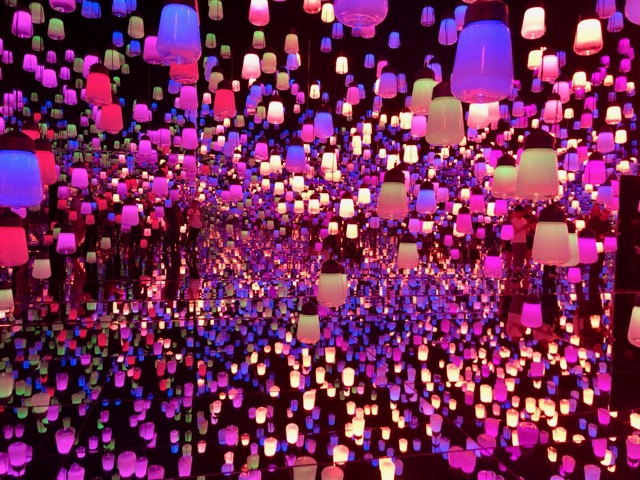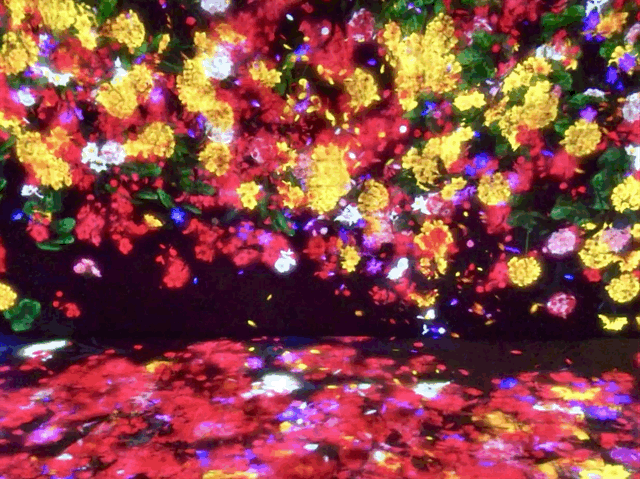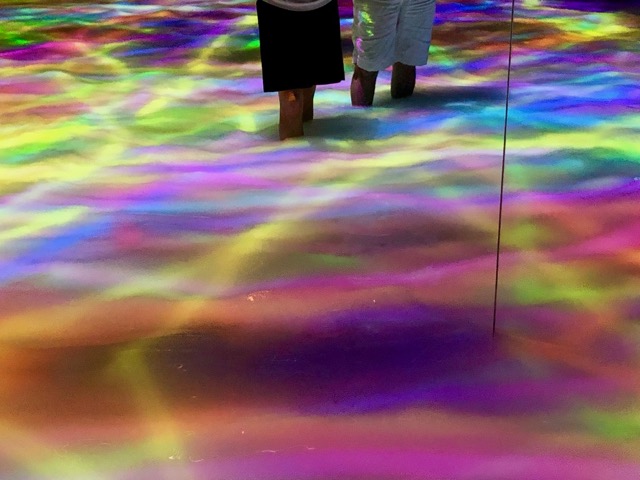
Immersive, interactive, and Instagram-ready art is incredibly popular these days, and you can find some of the most impressive in the massive digital museums created by the TeamLab art collective: Borderless and Planets. We visited Planets first, and had so much fun that we decided to also visit Borderless the next week!
There are helpful articles online describing the differences between the two; if I were to choose only one it would be Planets, for several reasons:
- Tickets are timed by the half hour, so crowds are limited somewhat when you enter (vs at Borderless, tickets only specify a day; at either, go as early as possible)
- It’s a bit smaller and there’s a clearly marked route, so you don’t miss anything (vs Borderless, which is a dark maze of unmarked rooms that leads to some backtracking and FOMO)
- You go barefoot and walk through ankle- and knee-deep water in places, which really adds to the feeling of being immersed in another world… pun intended!
Both museums have a variety of rooms with different installations: lots of digital projections, changing colors and swirling motion, and interactivity – like butterflies or lizards that you color and scan at a station in the room, which then flutter across the floor and are all too easy to “squish” and disappear if they’re stepped on. (If you’re patient, they’ll reappear, intact once again, somewhere else in the room!)

A typical TeamLab installation
We spent a little over an hour in TeamLab Planets, though I think it would be easy to be there for twice that if you really take your time (or if you’re a passionate selfie-taker!).
To start, you walk up a dark, narrow incline with shallow water flowing over it: “walking up a waterfall”. Next is a room where the floor is basically a squishy pillow (which I discovered as soon as I stepped in, sank up to my knees, and tipped over!). I can’t remember the last time I laughed so hard with surprise and delight.
One of the most striking installations appears in both museums, an “infinite crystal universe” that consists of mirrored rooms filled with strings of LEDs that sparkle with different colors and effects; it’s mesmerizing to see the near-infinite reflections all around.

All of these people are us!
There’s a room full of giant, nearly weightless balls that change color while you push your way through them.

One of the rooms at Planets is filled with knee-high water with a rainbow of lights playing across it; wear shorts or a skirt, though you can also rent shorts on site – very Japanese! (Note there is no water at Borderless.) Koi and floating flowers play across the water and change in reaction to motion, swimming away or bursting into a shower of petals. Every wall is mirrored so it looked like it extends forever.

The last stop is a pitch dark space where you can sit or lie down on a mirrored floor, surrounded by a screen showing falling digital flowers that created an effect that made me feel like the room was rotating as we spun through space. (Not the best for my vertigo!)
There are some only-at-Borderless installations like the “forest of resonating lamps” shown at the top of the post, the only room with a time limit. Actually, I thought the better view was from the waiting area outside (on the wrong side of a two-way mirror), looking in at all the colors and the infinite reflections.
There’s also a dark, round room with beanbags in the center, where you can relax and watch mesmerizing, ever-changing waves projected all around you. As in other TeamLabs installations, it isn’t a recording but rather live digital art that never repeats.

While Tokyo is no longer a city of technological marvels unseen in the US (except the toilets, of course), TeamLabs proves that it is still home to cutting edge ideas. And as the crowds attest, it’s a Tokyo must-do.
 Flying United Global First
Flying United Global First Al fresco dinner at Angèle, Napa CA
Al fresco dinner at Angèle, Napa CA Tuna salad with tomato
Tuna salad with tomato Anguilla scrapbook
Anguilla scrapbook